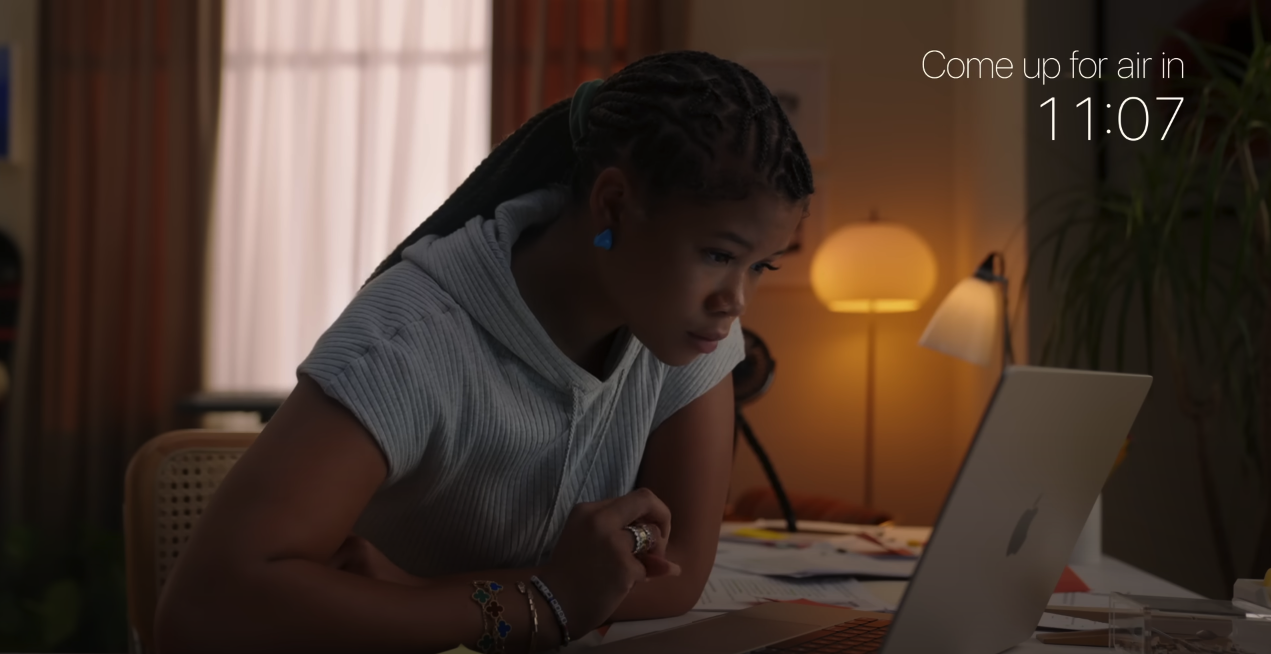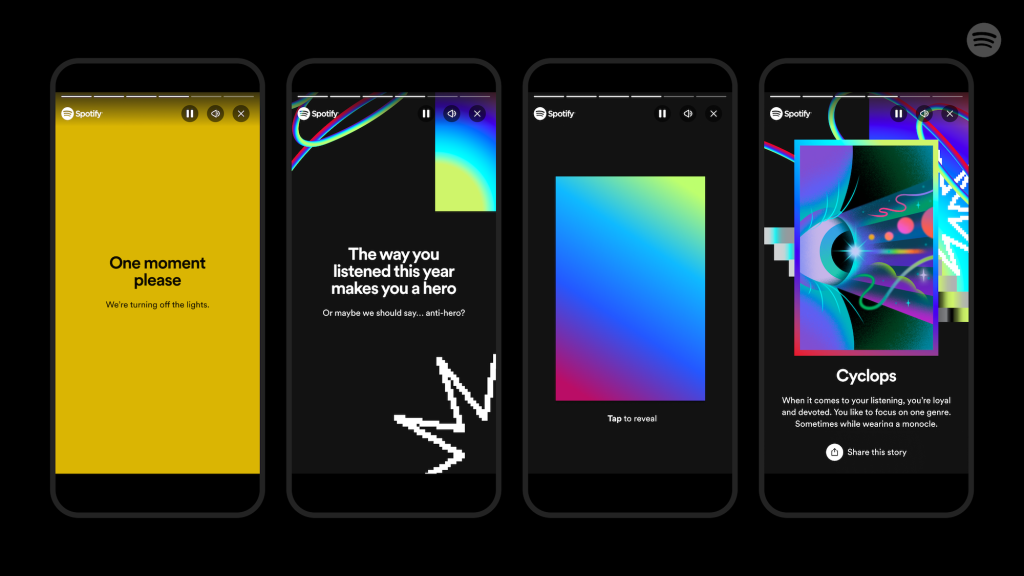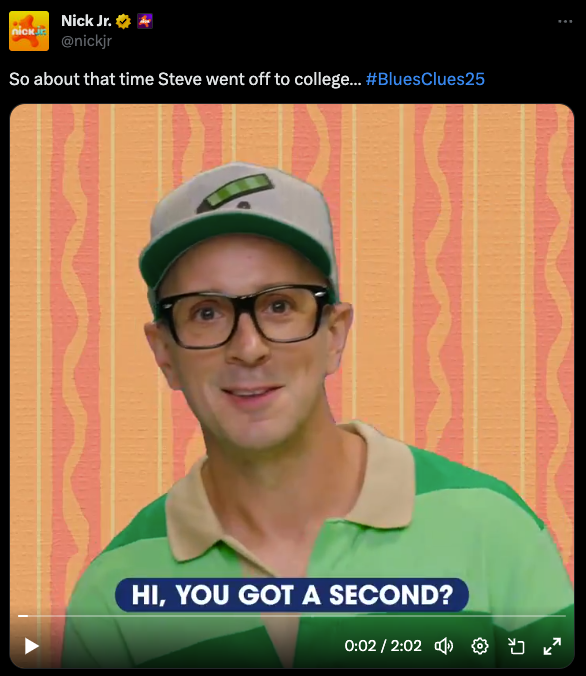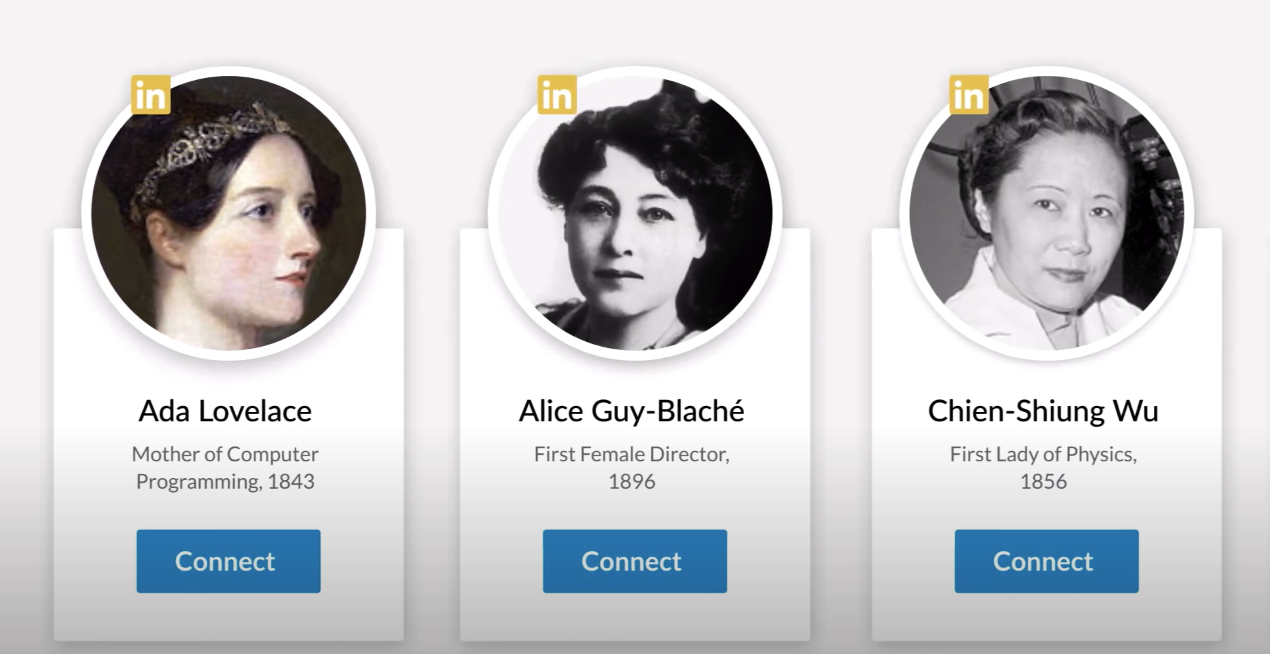Technology makes the world seem a lot smaller.
Keeping up with friends and family on the other side of the country or across the globe no longer requires an expensive telephone call or slow, one-way snail mail.
Instead, thanks to the power of social media, we can bridge distances in the blink of an eye. In just seconds, you can share updates about your life or check in with anyone with internet access.
Social media has changed how we communicate and how we consume information and entertainment.
These platforms unlock a treasure trove of opportunities for savvy marketers, transforming how brands engage with their audience and share their stories on a global stage.
Why Is Social Media Marketing Important For Brands?
Social media platforms like Instagram, TikTok, X (Twitter), and Facebook – among others – present businesses with an opportunity to engage with a massive audience.
They are not just digital spaces for socializing; they are vibrant marketplaces.
As of 2024, the global social media user base had soared to over 4.8 billion people, representing an ever-expanding audience for brands – and a whole lot of potential customers.
Social media provides the opportunity for marketers to humanize their brand through compelling storytelling that showcases their identity and values.
With social media marketing, brands can weave their narratives, engage vast audiences without hefty budgets, and raise awareness and consideration for their company with a broader audience.
It’s also a powerful tool for building authentic relationships with your target consumer.
You can conduct real-time customer service, gather feedback (both positive and negative), and build brand trust over time by interacting and engaging with your social community across specific platforms.
In addition:
- 68% of consumers follow brands on social media to stay updated about products and services.
- The average time spent on social media daily is 2 hours and 24 minutes.
The landscape of social media marketing is also shifting towards more engaging content formats such as short videos, live streams, and interactive stories.
From viral organic posts to paid display ads that allow you to target a highly specific demographic, social media presents an unrivaled opportunity to boost your brand visibility and find new customers.
That said, these platforms are not just about placing ads in front of consumers; they’re about creating conversations, building communities, and driving genuine brand engagement through content that resonates with audiences.
So, what separates the companies who are killing it on social media from the thousands of others who never quite seem to gain any traction?
In this piece, we’ll look at some outstanding ways brands have leveraged popular social platforms to inspire your campaigns.
How To Measure Social Media Marketing Effectiveness
Before we dive into the fun stuff, let’s take a moment to discuss how you can gauge the impact of your social media marketing efforts.
The key to assessing the effectiveness of your social media activities lies in measuring your key performance indicators (KPIs).
Some KPIs you might want to consider tracking include:
- Reach: The number of unique users who see your content. This helps you understand the overall scale of content distribution.
- Impressions: How many times your content was viewed (regardless of clicks or engagements). This can help you gauge how frequently people are looking at your content.
- Engagements: Interactions with your content (e.g., how many likes, shares, comments, saves, etc., it received). This helps you understand how engaging users are finding your content.
- Conversions: How effective your content is at driving actions (e.g., link clicks, follows, form fills, sales, sign-ups, etc.) This helps you understand whether your content is driving towards your goal-related activity.
The KPIs you choose should closely align with your strategic goals.
If you’re looking to boost awareness, reach, impressions, and engagement, offer valuable insights into how widely your message is seen and whether it’s resonating with users.
If you’re focused on lead generation or direct sales, focusing on conversion rates will provide a clearer measure of success.
Each brand is different, which means they will not only measure success differently but will also vary in which platforms are most effective for their social media marketing efforts.
With this in mind, we’ve broken down our examples and inspiration by platform. So, with no further ado, let’s jump in.
YouTube
1. Dove: Project #ShowUs
When: 2019
Campaign Outline:
To highlight that beauty comes in many forms, Dove launched Project #ShowUs, a campaign intended to challenge stereotypes of what is and isn’t considered beautiful.
In collaboration with Getty Images and Girlgaze Photographers, Project #ShowUs created the largest stock photo library in the world created by women – featuring all female-identifying and non-binary individuals.
The library featured over 5,000 photographs of women from around the globe. Dove took to social media to introduce it to the world, creating video content for YouTube and partnering with influencers to gain traction.
The Numbers:
- The YouTube video has generated over 33.5 million views.
- More than 100,000 women pledged to create a more inclusive vision of beauty.
- 900+ companies in 40 countries downloaded 7,500+ images from the collection
- The hashtag #ShowUs saw thousands of engagements across YouTube, Twitter, and Facebook.
Why Did It Work?
For generations, media and advertising have presented an image of what beauty is. However, this has left so many women feeling like they are not represented by media and advertising.
Dove spoke directly to the feelings of its target audience, engaging with them about the brand’s value and encouraging them to take pride in being themselves.
Strategic delivery helped reach women worldwide.
2. BuzzFeed x Friskies: Dear Kitten
When: 2016
Campaign Outline:
If there’s one thing the internet loves, it’s cat videos.
Buzzfeed and Friskies tapped into this sentiment with their “Dear Kitten” videos, in which an older house cat teaches a kitten how to be a cat.
The Numbers:
- The launch video has been viewed on YouTube more than 34 million times.
- Twelve follow-up videos have been viewed millions of times each.
- The campaign led to viral TikTok parodies, with the hashtag #DearKitten receiving more than 3.6 million views.
Why Did It Work?
You don’t have to have genius-level insight into the human psyche to understand why this campaign was so successful.
It has cute cats and a funny script.
3. Apple: “Study With Me”
 Screenshot from YouTube, Study With Me feat. Storm Reid x Apple, Apple, February 2024
Screenshot from YouTube, Study With Me feat. Storm Reid x Apple, Apple, February 2024When: 2023
Campaign Outline:
Apple tried its hand at the popular “Study With Me” video trend in 2023 by creating a 90-minute feature starring actress and college junior Storm Reid.
In the video, Reid uses the Pomodoro Technique – which focuses on 25-minute study sessions followed by 5-minute breaks – to showcase a productive study routine.
The video serves as a virtual study companion for viewers who are looking for that type of content while also highlighting the capabilities of Apple’s MacBook Air product.
The Numbers:
- The video has generated over 18 million views on YouTube.
Why Did It Work:
Apple did what great social media marketing often does: It tapped into a trending format to reach its ideal audience.
By tapping into a burgeoning trend among students seeking virtual companionship and motivation – and pairing that with Storm Reid, a recognizable figure who is also relatable for the target audience – the campaign struck a chord of being both authentic and helpful to viewers.
On top of that, incorporating a tried-and-true study technique gave the audience a practical takeaway to enhance their own study habits.
4. eBay: Modathon
When: 2023
Campaign Outline:
eBay wanted to shift perceptions of its brand and drive excitement with an audience of auto enthusiasts.
So, the brand created a social media campaign to tap into the subculture of offroading by leveraging the huge inventory of eBay Motors.
In a YouTube series called “Modathon,” the company partnered with YouTube creators on a mission to transform a 1979 Bronco into an offroading powerhouse using only parts and accessories from eBay Motors.
Across several longform episodes, creators customized the Bronco with parts for challenging trails.
The Numbers:
The series generated:
- 35,000 new YouTube channel subscribers.
- Over 8.4 million views on YouTube to date.
- More than 100 million minutes watched.
- 6:28 minute average episode watch time.
Why Did It Work:
The Modathon challenge succeeded by tapping into what drives the offroading community: a passion for adventure, customization, and modification.
By partnering with YouTube creators who embody the spirit and enthusiasm of its target audience, eBay positioned itself as not just a marketplace but a hub for inspiration and community.
The narrative series format catered to the audience’s preference for immersive, detailed content, which then helped foster a stronger connection with the brand.
5. Apple: The Shot on iPhone Challenge
When: Ongoing (Launched in 2015)
Campaign Outline:
The world’s most popular smartphone manufacturer, Apple, takes great pride in the quality of images that can be captured on its devices.
To highlight the great photos that it can take, it launched a competition in 2015 that asked iPhone users to “capture the little things in a big way.”
Photographers were then invited to share their images on Instagram and other social media sites using the hashtag #ShotOniPhone.
A panel of judges then selected 10 winners from tens of thousands of entries, which were then featured on Apple’s website, the company’s Instagram, and on 10,000+ billboards in 25 countries.
It has since become an annual campaign for the brand.
The Numbers:
- The first round of the campaign had more than 6.5 billion impressions.
- It was mentioned by 24,000 influencers, with a 95% positive comment rating.
Why Did It Work?
User-generated content (UGC) is a low-investment way for companies to promote their brand on social media, but this isn’t the reason for this campaign’s success.
Instead, Shot on iPhone encourages people to discuss the campaign, which closely aligns with Apple’s reputation for creativity, lifestyle, and innovation.
It encouraged existing users to participate in product launches and builds a sense of excitement about being part of the iPhone community.
Additionally, it gives iPhone users a sense of being part of something cool, which everyone likes.
6. Spotify: Spotify Wrapped
 Screenshot from newsroom.spotify.com, February 2024
Screenshot from newsroom.spotify.com, February 2024When: Ongoing (Launched in 2019)
Campaign Outline:
In 2019, Spotify launched a campaign where users received a year-end round-up of their listening habits on the platform.
Using personalized in-app data, Spotify Wrapped gives you access to an exclusive, interactive story (or, in the past, a webpage) that shows you details like:
- Your most listened to artists, genres, and songs.
- Your top podcasts.
- The total time you spent listening for the year.
- New artists you discovered.
- And more.
The data is presented in a visually appealing way that is formatted specifically for sharing to Instagram Stories (and elsewhere) – and Spotify encourages users to share far and wide.
Now, several years later, Spotify Wrapped has become an event that users anticipate and talk about even ahead of time.
It has evolved to serve users with new tidbits of information – such as what international city you’re aligned with based on your listening habits – and has succeeded at creating a tentpole social media marketing moment.
The Numbers:
- In 2022, 156 million users engaged with Wrapped.
- In 2021, that number was reportedly 120 million.
- There were 425 million Tweets about Spotify Wrapped in the first three days after its launch in 2022.
Why Did It Work?
Spotify combines two big psychological triggers in this campaign: personalization and fear of missing out (FOMO).
The app provides a personalized story for each user. You can see how your music taste developed through the years and what songs accompanied you in your life. The visualizations and gamification make it super engaging and capture people’s attention.
By enabling and encouraging sharing on social media, Spotify amplifies the campaign’s reach. It creates a sense of community in which users want to share their results with others – and see where they differ from their friends.
People naturally wanted to show off their highlights to their friends, thus making more people eager to try this experience.
7. Freeform: Cruel Summer Influencer Nostalgia Campaign
When: 2023
Campaign Outline:
After record-breaking viewership of season one of “Cruel Summer,” Freeform needed to reignite interest in the show’s second season.
So, the brand put together a social media campaign built around a classic tactic: nostalgia.
Collaborating with six popular Instagram meme accounts and throwback influencers like Lance Bass and Mario Lopez, the network leveraged ’90s nostalgia to create buzz around the new anthology format of Cruel Summer.
The Numbers:
- The campaign garnered a total reach of over 22 million and 3.7 million organic impressions.
- A top post by ThirtyAF achieved a 6.5% engagement rate.
- The brand saw a unanimously positive sentiment from fans who expressed excitement for the new season.
Why Did It Work?
Nostalgia has proven itself to be an extremely powerful marketing tactic – and that’s especially true on social media.
Freeform’s campaign leveraged the power of nostalgia marketing – and its audience’s love for the ’90s – to drive impressive social media engagement.
Additionally, partnering with trusted social media influencers further amplified the impact of the campaign.
This innovative approach – combined with the excitement for new stories – led to a universally positive reception, proving that a well-curated throwback theme can effectively drum up anticipation and broaden viewer interest.
8. Hulu Originals: Only Murders In The Building
When: 2021
Campaign Outline:
In a strategic move to captivate audiences and announce the first season of “Only Murders in the Building,” Hulu partnered with Home Brew Agency to craft an Instagram campaign that reflected the mysterious tones of the show itself.
The strategy centered around transforming the Instagram feed into an extension of the show’s universe, complete with a detailed mosaic of the fictional Arconia building.
The campaign also highlighted the star-studded cast of Steve Martin, Martin Short, and Selena Gomez through character spotlights that introduced and teased the evolving dynamics between the main characters to interactively immerse followers in the series’ murder mystery.
Original videos and games were designed to spark curiosity and speculation among fans without revealing too much, maintaining the suspense that is the lifeblood of any whodunit.
The Numbers:
- The @onlymurdershulu Instagram account quickly grew to 116,000 followers.
- As a result, the show launched as Hulu’s “Most-Watched Comedy Premiere in Hulu History” and the most-watched Hulu Original comedy on premiere day.
Why Did It Work?
Hulu Originals did a number of things right here.
Firstly, it leveraged Instagram to extend the story world of the series and engage fans on a platform where they’re already active and invested.
The brand made use of the show’s considerable star power to activate a broad fan base across different demographics and generate excitement and curiosity.
By introducing an immersive social media experience that focused on mystery and teasing elements of the show piece-by-piece, Hulu Originals expanded the show’s narrative beyond the screen, heightened anticipation, and invited social media fans to join in on the fun.
This holistic approach not only solidified the show’s online presence but also played a crucial role in driving its record-breaking viewership on Hulu, demonstrating the power of social media in amplifying television narratives
9. Bobbie: @Bobbie Instagram Handle
When: 2023
Campaign Outline:
Bobbie, a baby formula brand, is on a mission to reshape societal perceptions around infant nutrition.
In 2023, the brand set out with an objective to leverage Instagram to cultivate a supportive, diverse community for modern parents.
Central to the brand’s mission was to make the tumultuous first year of parenting less daunting by using Instagram to bond over shared experiences within the first year of parenthood and help parents feel less alone.
To do so, the brand focused on showing the real, parent-driven team behind the scenes at Bobbie, telling the powerful stories of challenges real Bobbie parents face (such as infertility and systemic injustices in maternal care). It even responded with real-time support, such as Uber-delivered formula to Instagram followers experiencing emergencies.
The Numbers:
- Total engagements increased to 307,000 – a 338% jump from the previous year.
- Increased total impressions to 162 million – a 334% jump from the previous year.
- Followers grew to 113,000 – a 37% rise from the year beforehand.
Why Did It Work?
Bobbie’s strategy resonated deeply with its audience by focusing on authenticity.
By openly addressing the complexities of parenting, offering tangible support, and spotlighting real stories, Bobbie not only fostered a community but also positioned itself as a brand that truly understands and advocates for its customers’ needs.
In addition to enhancing its social metrics, the hands-on approach and commitment to addressing systemic challenges in parenthood – coupled with strategic storytelling and community engagement – also solidified the brand as a leader in championing the well-being of parents and children alike.
10. BuzzFeed: Tasty
When: 2016
Campaign Outline:
You’ve probably seen these quick and easy recipe videos popping up all over your Facebook news feed.
BuzzFeed’s Tasty videos are essentially cooking shows for the social media generation.
These videos, typically lasting less than two minutes, deliver on-trend recipes to a highly engaged audience.
The Numbers:
- Nearly 15 months after launching, Tasty published 2,000 recipe videos, giving the brand a steady stream of new content.
- Videos reached around 500 million users monthly.
- The brand has over 105 million Facebook fans.
Why Did It Work?
For starters, there’s the content.
Tasty tapped into the inherent shareability of food content and the fact that almost everyone can relate to food – it has a place in all of our lives.
But more importantly, Tasty and Proper Tasty have exploded on Facebook because the content is tailor-made for that platform.
The team at BuzzFeed clearly observed video trends on Facebook and jumped while the time was ripe.
By producing high-quality, visually appealing videos that users could easily replicate at home, Tasty not only entertained but also provided value, making it a go-to resource for culinary inspiration.
The videos are optimized for Facebook’s autoplay feature, which starts playing videos without the sound on.
You don’t need sound to see, for example, a 45-second guide to making a cheese-stuffed pizza pretzel.
11. Planet Fitness: Home Work-Ins
When: 2020
Campaign Outline:
In 2020, with the world grappling with lockdowns and gym closures, Planet Fitness set out to leverage Facebook to revolutionize home fitness.
As many of us scaled back our physical activity in order to shelter in place, Planet Fitness launched “The Home Work-In” series.
This innovative campaign transformed Facebook Live into a virtual gym, offering free, daily live workouts to motivate people globally.
To make it happen, the company equipped trainers across the country with the necessary tech to broadcast from their homes. These sessions featured professional trainers, celebrities, and athletes, ensuring variety and broad appeal.
The Numbers:
- Over 373 million total campaign impressions.
- Viewed by over 208 million people across 37 countries.
- Increase the average watch time of Planet Fitness video content by 200%.
- Drove over 4.3 million new Facebook followers.
Why Did It Work?
Planet Fitness’s Home Work-In campaign brilliantly tapped into the needs of a global audience confined to their homes, craving movement and community.
By leveraging Facebook Live, it provided real-time, interactive fitness solutions that were accessible and free, breaking down barriers to exercise.
The strategic use of celebrities and athletes added star power, while the quick launch just days after widespread closures highlighted the brand’s agility and commitment to its members.
X (Formerly Twitter)
12. Nickelodeon: A Message From Steve – Blue’s Clues 25th Anniversary
 Screenshot from X (Twitter), February 2024
Screenshot from X (Twitter), February 2024When: 2021
Campaign Outline:
To celebrate the 25th anniversary of “Blue’s Clues,” Nickelodeon decided to use X (Twitter) to reconnect with the now-adult audience who had cherished the show as children.
The strategy was to evoke nostalgia and warmth by reminding them of the timeless bond they shared with the show, using a special message from the original host, Steve.
The centerpiece of the celebration was a “Message From Steve,” a video where Steve directly addressed the audience after decades.
The script, developed in close collaboration with Steve, touched on universal themes of adulthood, such as jobs, families, and student loans, while also acknowledging the growth and journeys of the audience since they last met Steve.
By using X (Twitter) as the distribution platform, Nickelodeon strategically featured Steve’s message in an area where it knew the conversation would flourish.
The Numbers:
- Steve’s messaging became a viral sensation, garnering:
- Over 40 million views.
- Close to 800,000 retweets.
- 2 million likes.
- Over 222 million impressions and 18 million engagements.
- It was the most engaging tweet of all time for any ViacomCBS account.
- Blue’s Clues and Steve were a trending topic on social media for several days, with fans sharing their emotional reactions, memories, and more.
- Celebrities, such as Seth Rogen and Blake Lively, and brands like XBOX and JCPenney engaged with the tweet.
Why Did It Work?
Steve’s return tapped into a deep well of nostalgia, which (as we’ve discussed above) is a powerful tool for engaging social media content.
It encouraged and allowed people to reconnect with childhood memories, and the sincerity of the message resonated with social media audiences all over the world.
By addressing the shared experiences of growing up and acknowledging the challenges of adulthood, the campaign fostered a powerful sense of community among viewers.
13. Busch: #PassMeABusch
When: 2022
Campaign Outline:
Busch Light had an ambitious goal: to dominate social media conversations on National Beer Day by making Busch Light the most talked-about beer brand.
In order to do that, it mobilized its passionate fanbase on X (Twitter) by turning April 7, 2022 into a celebration of beer, which was fueled by generous beer money giveaways.
The brand asked fans to share why they deserved to celebrate National Beer Day with Busch Light, promising $10,000 in beer money via CashApp for the most compelling reasons.
Throughout the day, it offered various giveaway amounts and “power hours” to maintain excitement and participation.
This led to fans sharing their unique, humorous, and sometimes poignant reasons for deserving a share of the beer money, generating widespread buzz and engagement.
The Numbers:
- Bush Light became the No. 1 topic on X (Twitter) for National Beer Day.
- The brand achieved:
- Over 40,000 social mentions.
- 1.7 million impressions.
- Nearly 3,000 new followers.
- The #PassMeABusch hashtag gained the company thousands of new followers.
- One of the biggest growth days Anheuser-Busch ever saw on Twitter.
Why Did It Work?
The campaign’s genius lay in its simplicity and direct appeal to the audience’s love for beer and the brand.
By offering tangible rewards to fans, Busch Light created a sense of excitement that resonated across X (Twitter), and provided strong incentive for engagement.
After all, people are much more likely to engage if they believe they might get something out of it!
The mix of humor, relatability, and the thrill of potentially winning beer money incentivized people to celebrate and engage, propelling Busch Light to unprecedented social media prominence on National Beer Day.
14. Planters: The Death Of Mr. Peanut – #RIPPeanut
When: 2020
Campaign Outline:
Perhaps one of the most bizarre social media campaigns: the beloved mascot of Planters snack food company died at the beginning of January 2020.
His death was announced with a tweet and later explained in a video ad posted to YouTube. The brand explained that Mr. Peanut had sacrificed his life to save his commercial co-stars, Matt Walsh and Wesley Snipes.
Planters invited fans to mourn the loss using the #RIPPeanut hashtag (which could also win them snacks).
The brands and regular social media users alike played along with the campaign, and it even got a mention on SNL.
The campaign was inspired by the reaction to celebrity deaths on social media. It aimed to repeat the same level of engagement that Tony Stark’s death caused in “Avengers: Endgame.”
Later, Mr. Peanut was reborn as a Baby Nut and now happily tweets from the Peanut Jr. account.
The Numbers:
- The tweet announcing the death of Mr. Peanut has gathered 42,000 retweets.
- It generated an increase of 24,000 followers for the @MrPeanut Twitter account.
Why Did It Work?
The campaign’s success hinged on its sheer audacity and the playful engagement with a topic as somber as death, presented in a way that was both humorous and captivating.
The premise was so unexpected and so wild that it immediately piqued the interest of users across X (Twitter) and quickly became a meme.
By tapping into meme culture and encouraging the participation of other users and brands, Planters created a viral phenomenon that transcended traditional marketing campaigns.
Many comedians and funny Twitter personalities jumped into the conversation, making jokes about Mr Peanut’s death – and other brands like Snickers, Crocs, and more joined in.
Planters did an exceptional job of taking the strange humor of the platform at the time, and putting that to use in an interactive and emotional rollercoaster that demonstrated the power of creative storytelling and community engagement.
TikTok
15. P&G: #DistanceDance
When: 2020
Campaign Outline:
Created during the pandemic (seeing a trend here?), Proctor and Gamble took to TikTok with a campaign designed to encourage social distancing.
Under the hashtag #DistanceDance, the company teamed up with social media and former competitive dancer Charli D’Amelio to help slow the spread of the coronavirus.
For the first 3 million videos posted to the short-form video apps, P&G donated to Feeding America and Matthew 25 Ministries.
The Numbers:
- The hashtag has inspired more than 2.3 million posts to date.
- Charli D’Amelio’s video received almost 7 million likes and had more than 135,000 comments.
Why Did It Work?
Recognizing that to reach a younger audience, it needed to reach them on their platform of choice, P&G jumped fully into this TikTok campaign.
Partnering with an established influencer helped the company reach an audience it would otherwise have struggled to connect with.
The give-back component also created a feel-good reason to participate in the hashtag challenge.
16. Chipotle Mexican Grill: Chipotle x Corn Kid
When: 2023
Campaign Outline:
When an interview featuring 7-year-old Tariq (a.k.a. Corn Kid) expressing his love for corn captured TikTok’s heart and went viral, Chipotle saw an opportunity to jump into the conversation – and highlight its roasted chili-corn salsa.
Seemingly overnight, Chipotle jumped on the trend and orchestrated a collaboration with Corn Kid, creating a video of him enjoying his favorite corn salsa burrito bowl at Chipotle.
The Numbers:
- The TikTok generated:
- Over 59.6 million views.
- Over 266,500 shares.
- Over 9.3 million likes.
- Nearly 13 million engagements across platforms.
- Over 110 million video views across platforms.
- Over 1.1 billion PR impressions from 768 stories.
Why Did It Work?
The partnership allowed Chipotle to enter a cultural TikTok conversation as it was unfolding in a way that felt authentic and memorable.
By being the first brand to partner with Corn Kid, Chipotle set itself apart from the competition and found a unique way to highlight its product.
The campaign’s success also stemmed from its rapid response to a fleeting cultural moment, showcasing Chipotle’s agility in content creation and ability to authentically engage with Gen Z.
The clever use of real-time culture mixed with Chipotle’s narrative around fresh ingredients resonated well with audiences, as it showed the brand really walks the walk.
17. State Farm: Jake Gets Social
When: 2022
Campaign Outline:
In order to reach the next generation of consumers, State Farm launched a TikTok campaign around its iconic “Jake from State Farm” character.
To do so, it made Jake a content creator on TikTok, having him participate in popular challenges and trends, and partner with recognizable influencers and celebrities on the platform.
The Numbers:
- Grew the Jake from State Farm TikTok page to 640,000 followers in 2022.
- The profile generated 1.75 million likes and 11.7 million organic views.
- Achieved a 14.5% average engagement rate on owned videos.
Why Did It Work?
State Farm successfully integrated Jake into the TikTok environment in an authentic way by creating engaging, community-driven content.
By focusing on creative challenges, partnerships with popular TikTok creators and celebrities, and genuine interactions with other TikTok users, State Farm went beyond the typical corporate presence on social and built real connections with people.
On a platform that values novelty and authenticity, State Farm’s adaptability and attention to trends enabled it to lay a solid foundation for future engagement with Gen Z consumers.
18. FOX Entertainment: Special Forces: World’s Toughest Test TikTok Challenge
When: 2022
Campaign Outline:
Here’s a fun one.
In this example, FOX Entertainment introduced a brand new augmented reality (AR) obstacle course challenge on TikTok to promote the upcoming season of “Special Forces: World’s Toughest Test.”
Designed to reflect the show’s focus on overcoming physical and mental barriers, users participated in the challenge by trying to complete a 2-minute AR course using push-ups and planks.
The Numbers:
- The AR experience collected over half a billion views.
- It also generated 42 million likes and 2 million shares, putting FOX Entertainment in the top 1% of effect creators on TikTok.
Why Did It Work?
The AR challenge leveraged a unique capability of the TikTok platform to create something that was both interactive and immersive for users.
It also made sense for the brand to produce, as it aligned closely with the show’s themes.
Whether or not you knew about the show beforehand, you could enjoy the exciting AR challenge – and develop an awareness of the show in the meantime.
The success of this campaign underscores the power of creative content strategies that leverage emerging technologies to connect with audiences in meaningful and memorable ways.
19. Harvard Business Review: Special Coverage: Coronavirus
When: 2020
Campaign Outline:
Because it’s so commonly used as a professional networking site, it’s easy to forget that LinkedIn is a social media platform just like Facebook or YouTube.
Harvard Business Review recognized it could fill a valuable role during the height of the pandemic by offering resources about the coronavirus.
Gathering many resources in one convenient place, it provided a credible source of information at a time when misinformation was running rampant.
The special coverage included information about developing work-from-home policies, responding to new variants, and helping find a new normal.
The Numbers
- The HBR has over 14 million followers, many of whom benefited from this information.
Why Did It Work?
From fears of microchipping to governmental conspiracies, the sheer amount of outright false information about COVID-19 was staggering.
On top of this, this was uncharted territory for businesses of all types.
Leveraging the credibility of its parent institution, HBR provided quality, factual advice for dealing with a wide variety of pandemic-related issues.
20. Verizon: #NotDone
 Screenshot from YouTube, #NotDone, Verizon, February 2024
Screenshot from YouTube, #NotDone, Verizon, February 2024When: 2020
Campaign Outline:
In 2020, we saw the 100th anniversary of women winning the right to vote.
To mark the occasion, Verizon launched the Future Fund, dedicating $5 million to nurture emerging female talent in technology and entertainment.
Then, the brand leveraged LinkedIn to creatively start a conversation about the historical underrepresentation of women and the roots of gender bias by creating posthumous LinkedIn profiles for pioneering women from history – such as Ada Lovelace, Dorothy Lavinia Brown, Chien-Shiung Wu, and more.
The campaign was designed to remind others that – until there are more women in tech and entertainment – we are #NotDone.
The Numbers:
- Created posthumous LinkedIn profiles for the first time ever.
- Engaged over 7 million users without any paid promotion.
Why Did It Work?
By leveraging LinkedIn to reintroduce historical figures to the modern job market, Verizon not only paid homage to their contributions but also starkly highlighted the brand’s messaging and values around the ongoing struggle for gender equality.
The platform was an effective choice for reaching professionals in decision-making roles within tech and entertainment, and the format Verizon chose was inherently buzzy, engaging, and never seen before.
Key Takeaway
Reflecting on the examples we’ve covered here, it’s worth noting how different they all are; they run the gamut of platforms, audiences, tactics, and messaging.
But one thing that does tie these brands together is this: They all found innovative ways to appeal to their targets and provide real value to people.
From Instagram to TikTok, these campaigns demonstrate the power of connecting with audiences in meaningful and unexpected ways.
The lesson for brands is to keep pushing the boundaries of engagement by offering value and relevance that resonates with their audience.
Embrace the challenge, and perhaps your campaign will be the next to inspire and captivate – and next year, you might even be featured on this list.
More Resources:
- 10 New Social Media Platforms & Apps To Have On Your Radar
- How To Create Engaging Social Media Content: 12 Tips To Drive Results
- How to Dominate Social Media Marketing: A Complete Strategy Guide
Featured Image: metamorworks/Shutterstock





